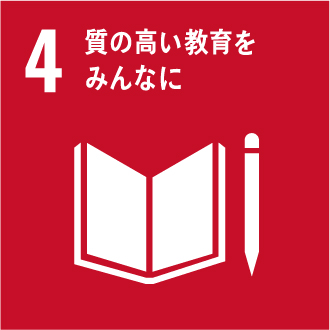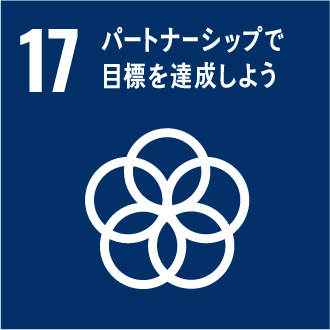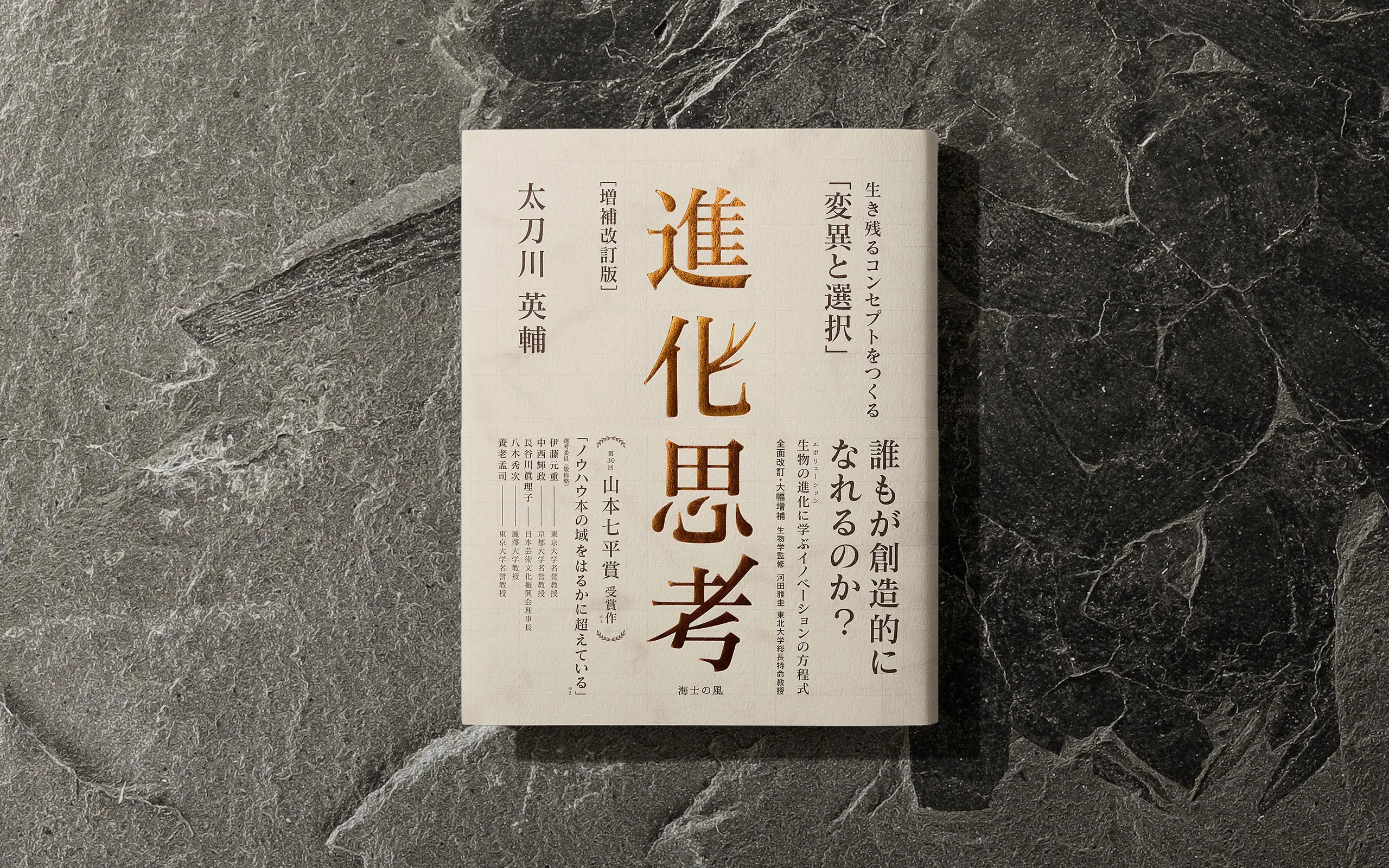
PROJECT
EVOLUTIONAL CREATIVITY
Creative methodology learning from biological evolution. Adopted by 70+ companies and universities, winner of Yamamoto Shichihei Prize. Translated into Chinese, Korean, Indonesian, spreading globally.
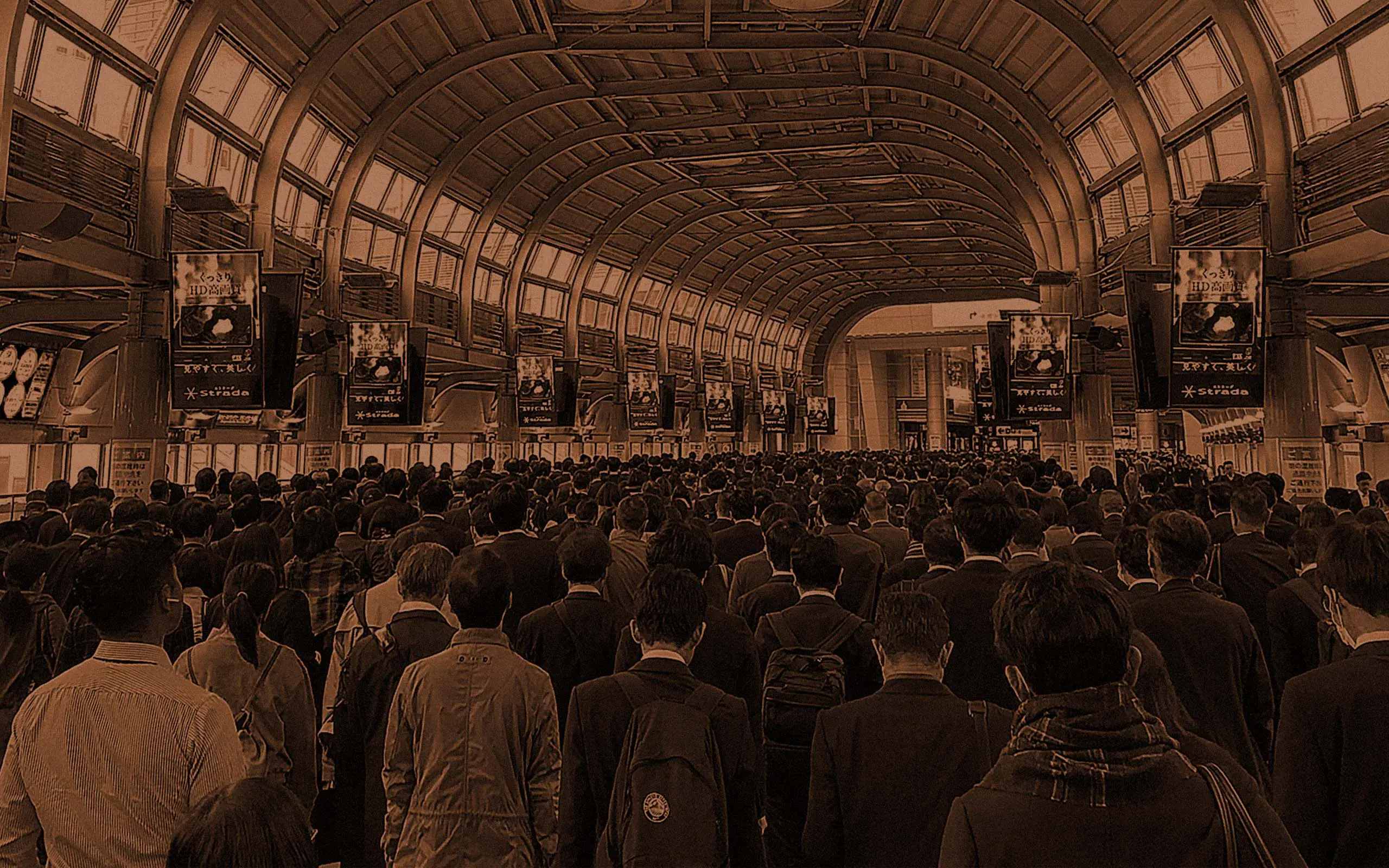
WHY
Is creativity something limited to those with talent?
In pursuit of our wants, we humans have become creative and invented all kinds of tools, thereby contributing to the development of our civilization. Despite its importance, creativity has been commonly regarded as an inborn ability requiring natural talent to bring it out. Is creativity something you cannot learn?
“Crystallized and Fluid Intelligence” by Raymond Cattell

Status on individual SDG targets at the midpoint of the 2030 Agenda
Chart of Japanese students who think they are creative
There are countless people who think they have no creative talent because they did not paint well in art class, etc. One disappointing survey found that only eight percent of college students in Japan thought that they were creative.
Do we really have a thorough understanding of creativity? When we think about it, we may realize how little we know about how creativity works and how we can be trained for it. If we can understand the inner workings of creativity, we may be able to acquire it.
In recent years, schools have started thinking about active participation by students such as active learning and inquiry-based learning. It is to foster creativity and an inquisitive mind not bound by the conventional framework of the class subject. Even in the business world, thinking methods that stimulate creativity are getting more attention.
If we have more people starting creative projects, it would lead to a more sustainable society and basic solutions for various social problems. To this end, we need to understand creativity itself and establish a theory and an education program to systematically learn about creativity.
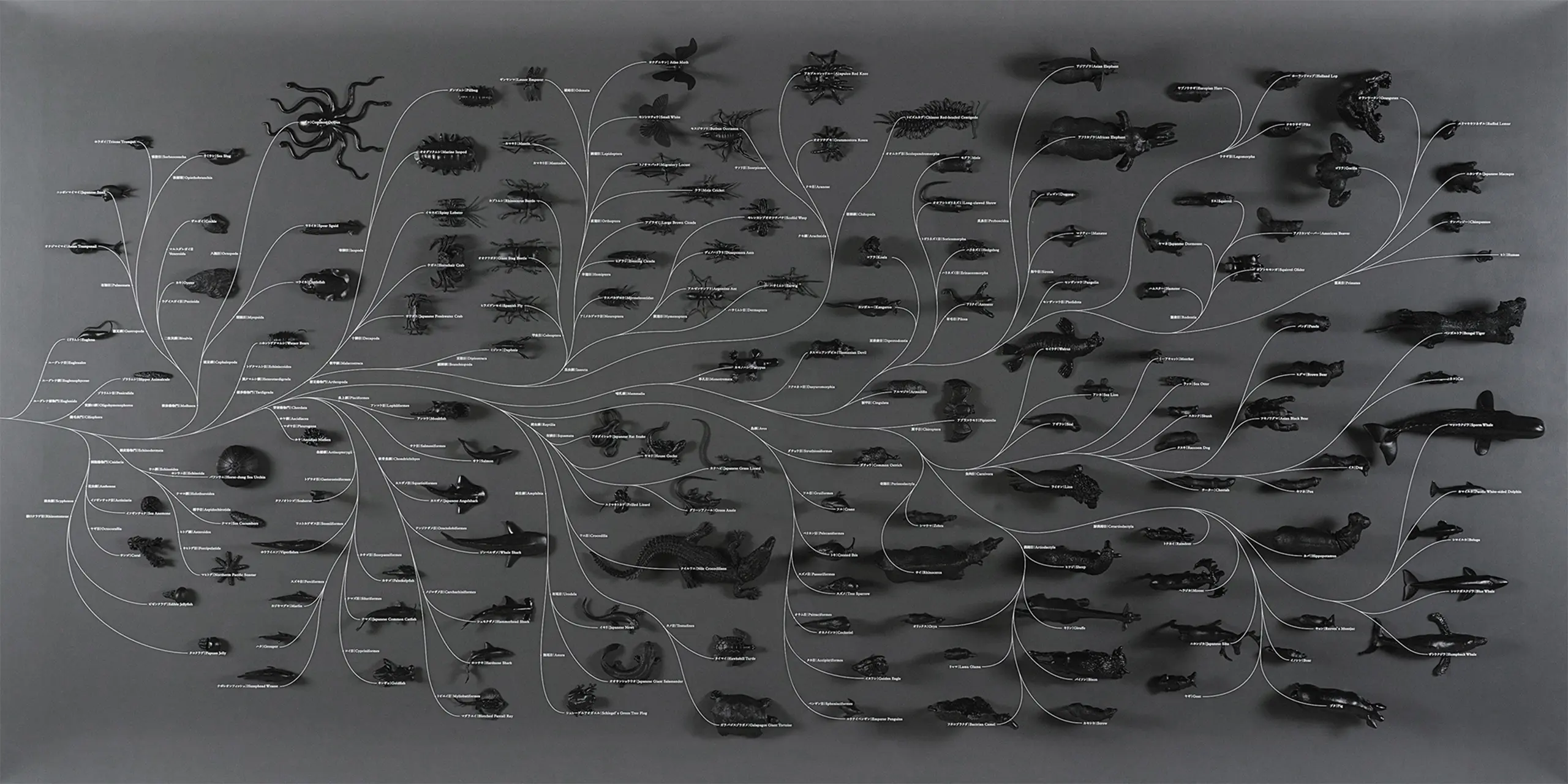
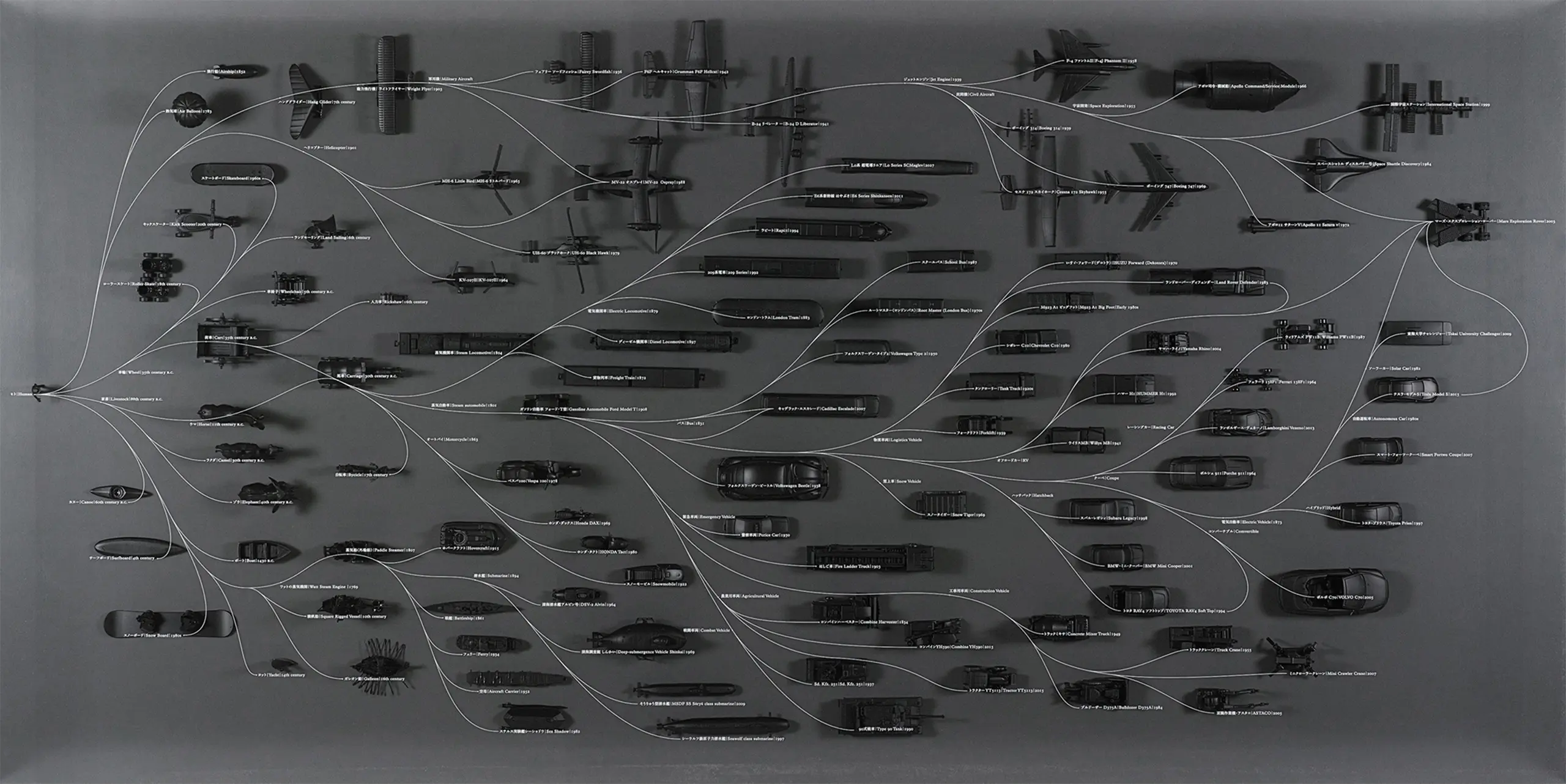
HOW
Systematizing creativity education using biological evolution.
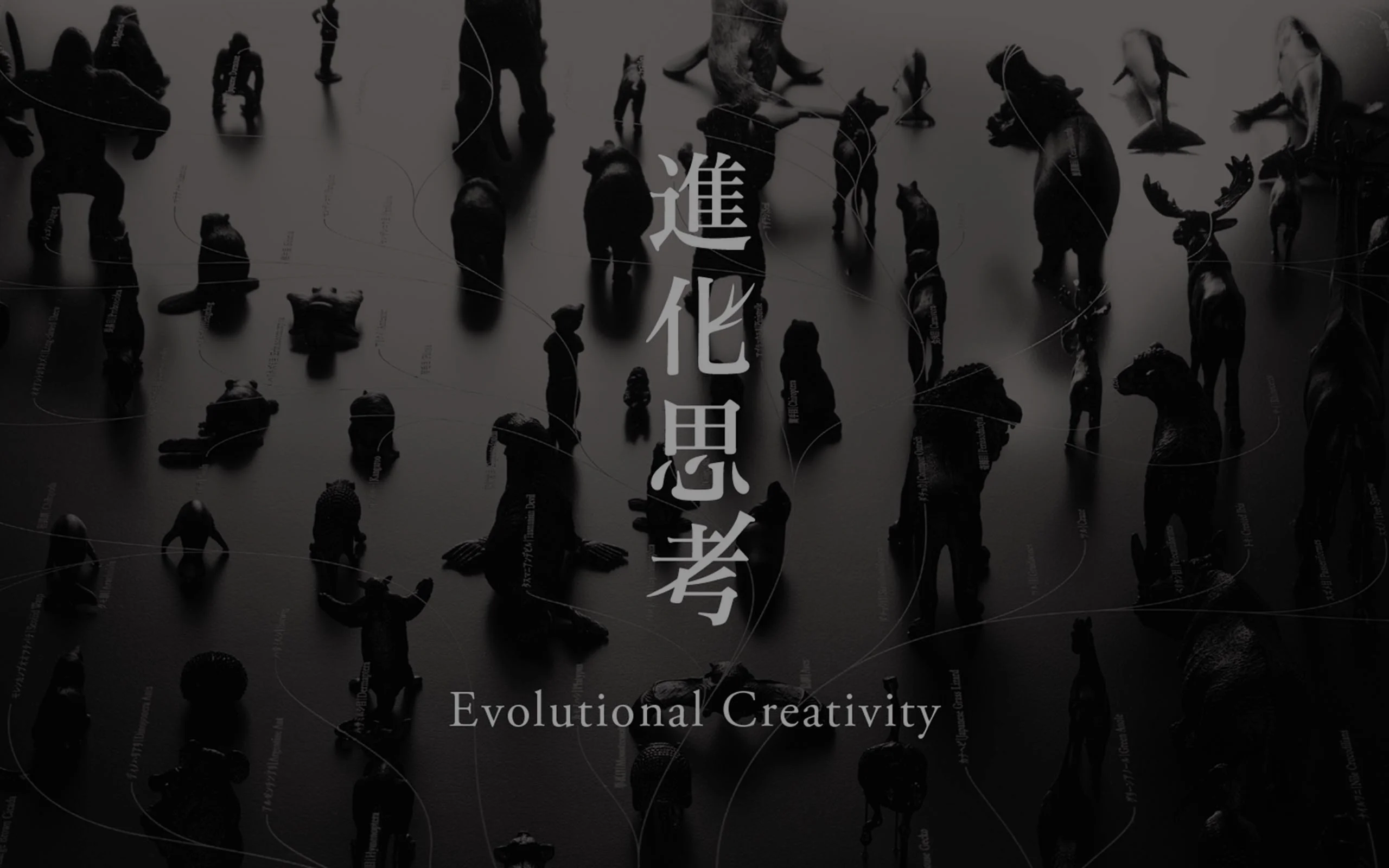
Human creativity is so special that it can be called a paranormal phenomenon in the natural world. Among the tens of millions of species in the 3.8 billion-year history of life on Earth, there are no other species that have demonstrated our level of creativity. Since we humans are also a part of nature, our creativity should also be regarded as a natural phenomenon.
Meanwhile, when we look at the shapes and forms in nature, we may think nature is even more creative than humans. Why is this?
From this perspective, Eisuke Tachikawa, the head of NOSIGNER, thinks that human creativity is a phenomenon similar to the evolution of living things. He has continued to try and structure creativity based on natural evolution. He has thereby come up with Evolutional Creativity, a systematized, creative thinking method that applies the workings of the evolution of living things to design and innovation.
Living things evolve by mutations which occurs by coincidence and by selections which occurs by necessity due to environmental factors and other conditions. These two processes recur genetically for generations.
If our creativity works in the same way, then many of humankind’s inventions and innovations that have revolutionized the world can be attributed to these alternating processes caused by coincidence and necessity. There is no conscious intention in both the coincidental and necessary processes. The two processes simply alternate between themselves to get closer to the optimum adaptation.
Creativity is something that occurs autonomously without depending on the creator’s conscious intention. Based on this idea, Evolutional Creativity is the process of alternating between Mutated ideas born from crazy and unconventional coincidence and Selective ideas born out of the necessity to adapt to current conditions. This alternating creativity process goes on for generations.
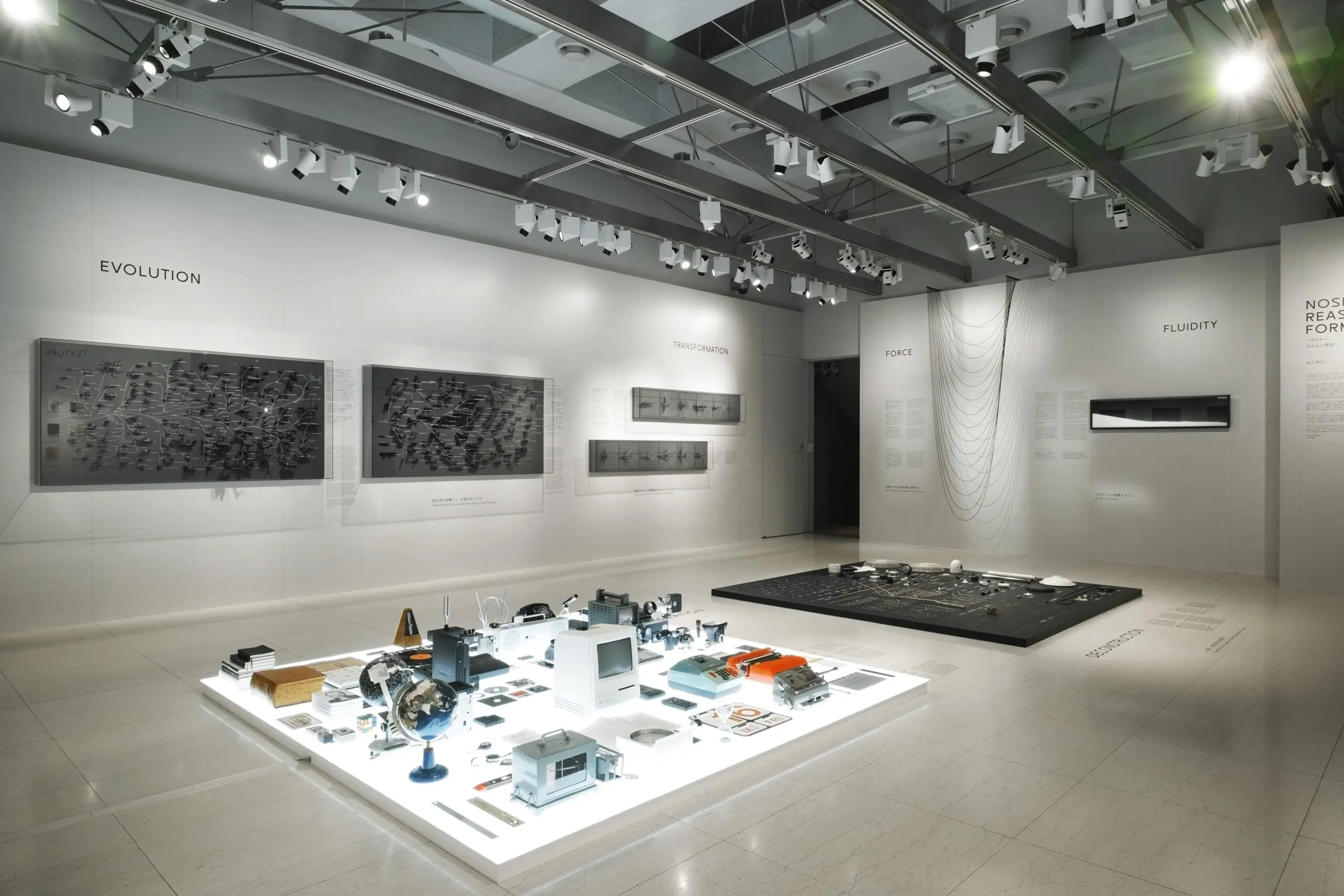

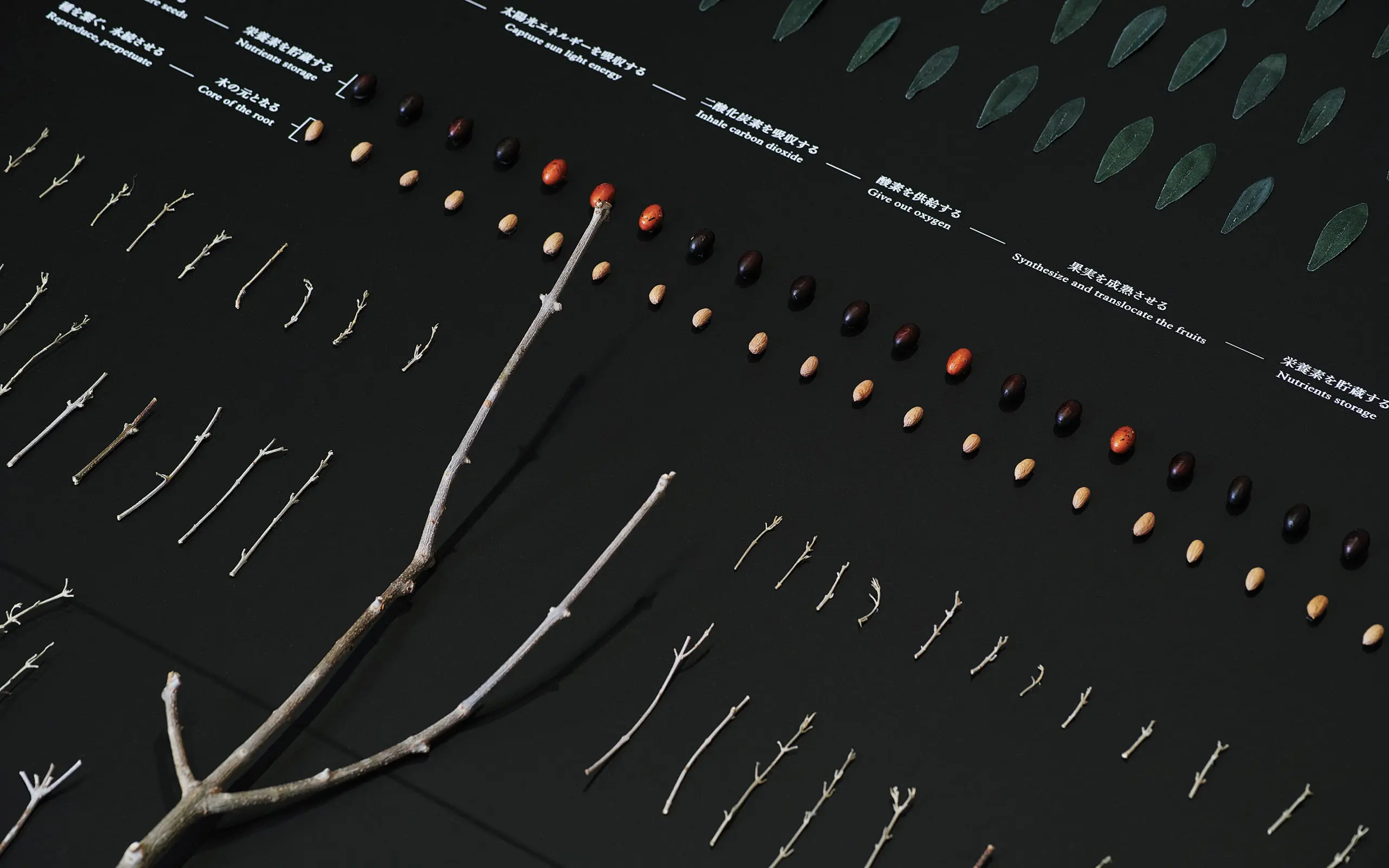
Tachikawa has been studying the connection between design and language, and he believes the source of human creativity comes from language. And the key to the evolution of living things is the mutation of the DNA which is very similar to language.
DNA copying errors can be likened to the mispronunciation and mishearing of language. Based on this assumption, Tachikawa theorizes that evolution and creativity produce similar patterns of mutation.
Similar patterns found in the evolution of living things are also evident in diverse human inventions and cultures. Evolutional Creativity applies these similar patterns to the creative process. The errors resulting in new ideas are categorized into nine types.
By using the nine mutation patterns of Variate, Disappear, Integrate, Reverse, Separate, Substitute, Assimilate, Transit, and Proliferate as tools from a toolbox, we can generate a large number of coincidental errors to create many ideas in a short amount of time. These are mutated ideas.
So how do we select a good idea from these types of errors? In the natural world, we can observe how living things make selections to adapt to their environment. If we learn from the natural scientist’s long-refined approach to observing the natural world, we might be able to select adaptative ideas.
While studying different observation methods in the natural sciences, Tachikawa noticed that there were only four perspectives encompassing both time and space. Each one was an established, biological observation system.
The four perspectives are Anatomy to understand internal parts, Ecosystem to understand the external environment, Lineage to understand the development of the genealogy, and Prediction to contemplate the future with the two Forecast and Backcast approaches. He systematized these four Adaptative methods and named them Spatial-Temporal Learning. By analyzing the conditions through these four perspectives encompassing time and space, we can understand how society is pressured into making the inevitable choices it makes. We can then counter them accordingly by selecting solid ideas.
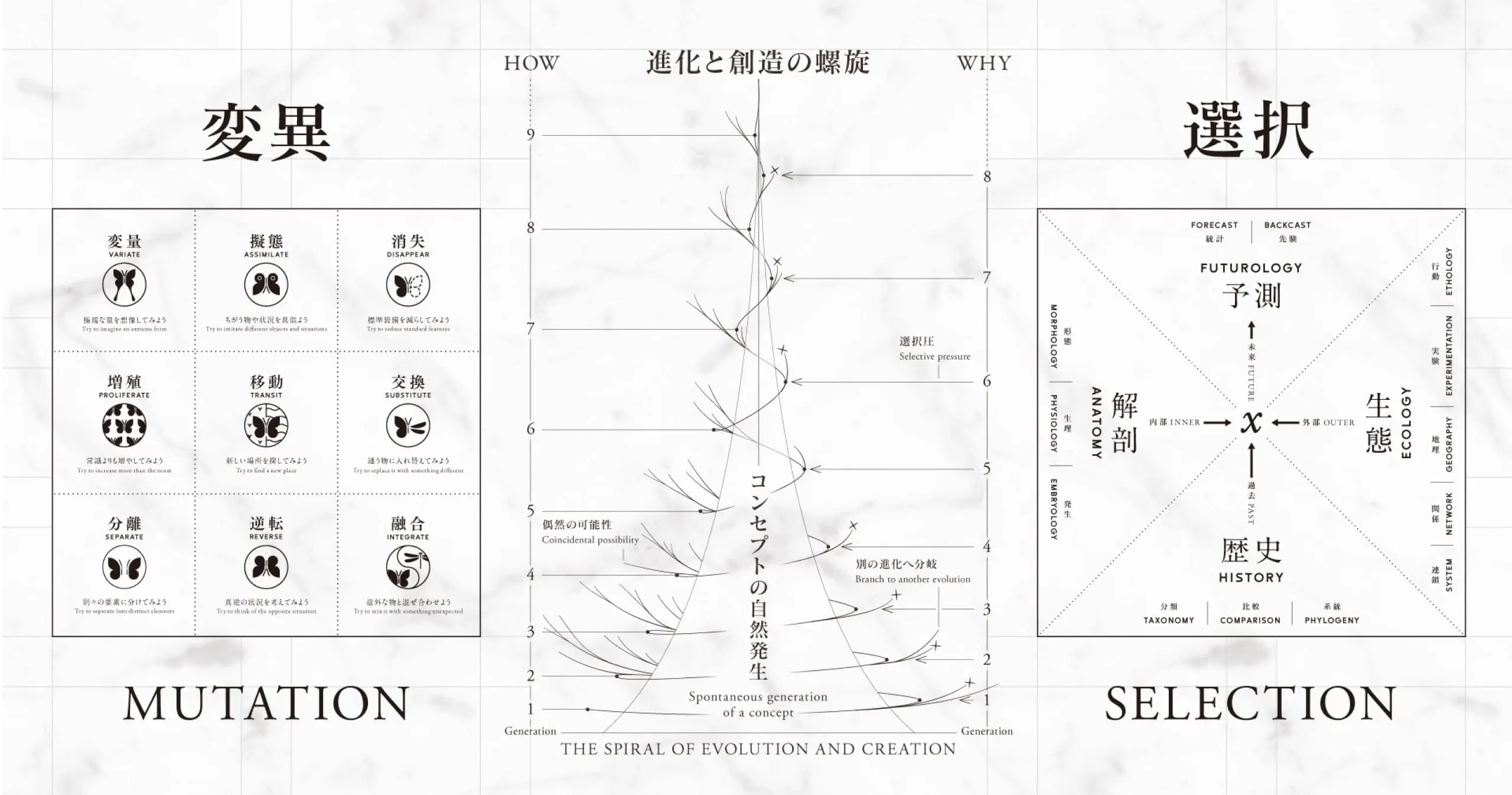
Evolutional Creativity is a way of thinking to conjure up creative concepts that can survive for a ong time while using and alternating between the two ideas of Mutation and Selection.
(The first edition of the book Evolutional Creativity used the expression “mutation and adaptation” in reference to the coincidental mutation and natural selection aiming for adaptation. However, the revised edition has changed the expression to “mutation and selection” to be more in line with academic correctness.)

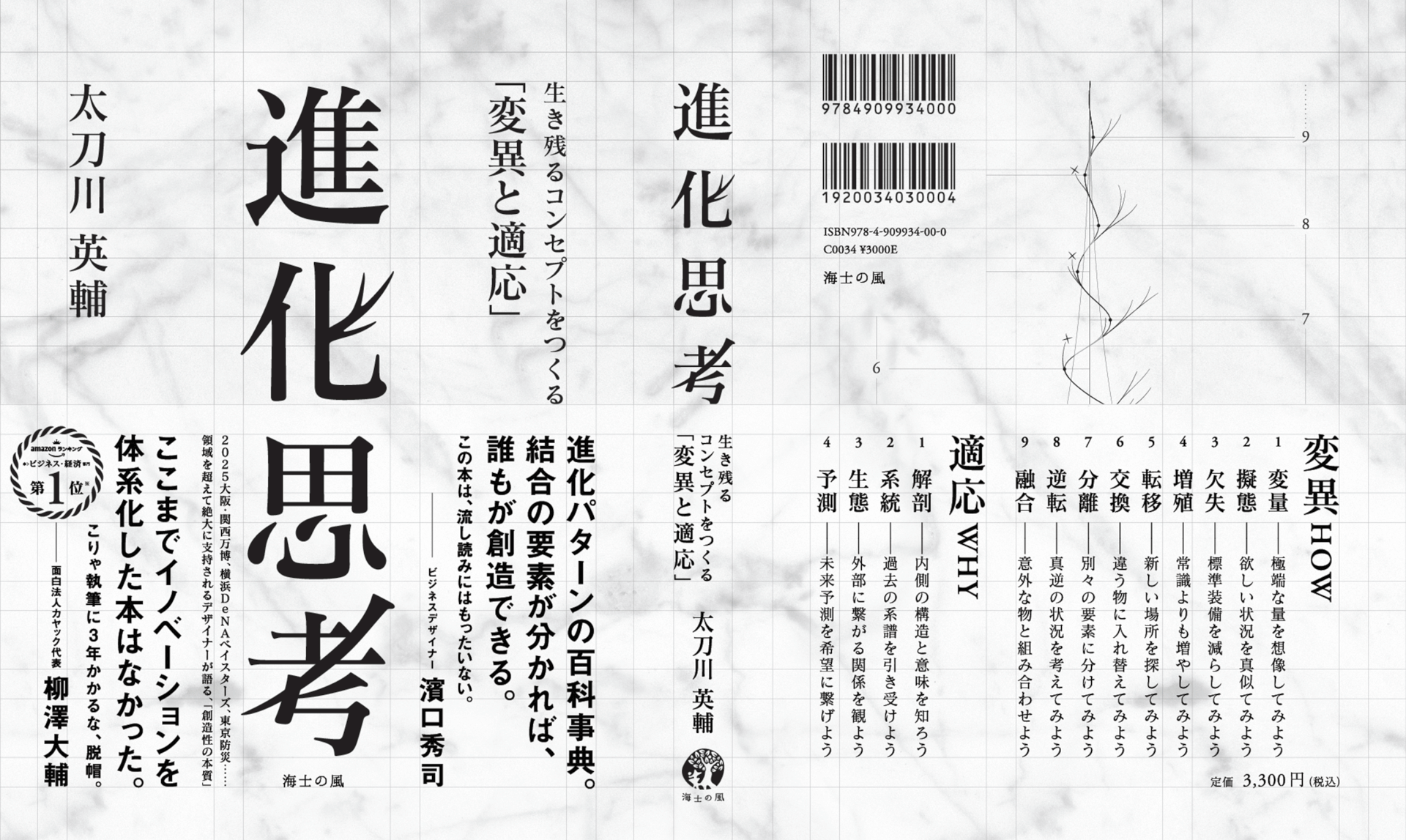
In April 2021, Evolutional Creativity went on sale as the first book published by Amanokaze, the first publisher to be founded in Ama, Shimane Prefecture, on a remote island with a population of about 2,000 near the national border. Despite being published in a remote location, the book became Amazon Japan’s No. 1 bestseller in the Business & Economics category. Within one week of its release, it sold 30,000 copies in three printings. Book sales have continued to expand widely.
The book has also won numerous awards in Japan. One of them was the Yamamoto Shichihei Prize, a prestigious academic award given once every few years to humanities books that epitomize Japan. The selection committee consisted of two biologists (anatomist Takeshi Yoro and evolutionary biologist Mariko Hasegawa), social science economist Motoshige Ito, political scientist Terumasa Nakanishi, and legal scholar Hidetsugu Yagi. The book received academic acclaim beyond the humanities and sciences.
With Evolutional Creativity, we want to prove that we can change the world even from a remote location. We also want to spread this new creativity education program to the world.
CLIENT VOICE
Evolution follows a variety of recognized laws. The author draws on these laws as a foundation, aiming to provide valuable reference material for so-called innovation.
While the specifics of each case are best explored by reading the book itself, the originality of the idea—applying evolutionary principles to thinking about innovation—far surpasses that of a typical how-to guide. The examples presented in each section are vivid and engaging, making the book enjoyable as a read. This reflects the author’s continuous and relentless thinking.
The 3.5 billion years of biological evolution on Earth have led to us, shaping who we are today. If that process was guided by certain laws, there is no reason those same laws could not serve as a reference for the processes yet to come.
The author’s approach is essentially analogical. Konrad Lorenz, the ethologist, once remarked in his Nobel Prize lecture that his method was purely analogical. In the academic world, which often emphasizes “originality,” few would admit this. Yet in contexts where originality is prized—such as in innovation—the significance of analogy becomes clear. In this sense, this work is highly valuable and deserving of the Yamamoto Shichihei Award.
Yoro Research Institute, Ltd. /
Professor Emeritus, The University of Tokyo
Takeshi Yoro

About Book Design
The book was designed by Tachikawa, the author himself.
He wanted the book to continue to be beloved beyond the current times. Inspired by geological strata built up for eons, he decided on a rock-like design and texture. It was also a tribute to the geological research of James Hutton who influenced Charles Darwin’s Theory of Evolution.
The book cover uses an embossed patterned paper (named “Iwa-hada” or rock surface) with a rock-like texture, on which a marble pattern is printed. As the book edges also have the same marble pattern, the 500+ page book looks like a thick and solid stone brick. Also, by eliminating decorative elements as much as possible and having a minimalist design, a uniform color tone is maintained. It is a timeless, attractive book design unswayed by any design trends.
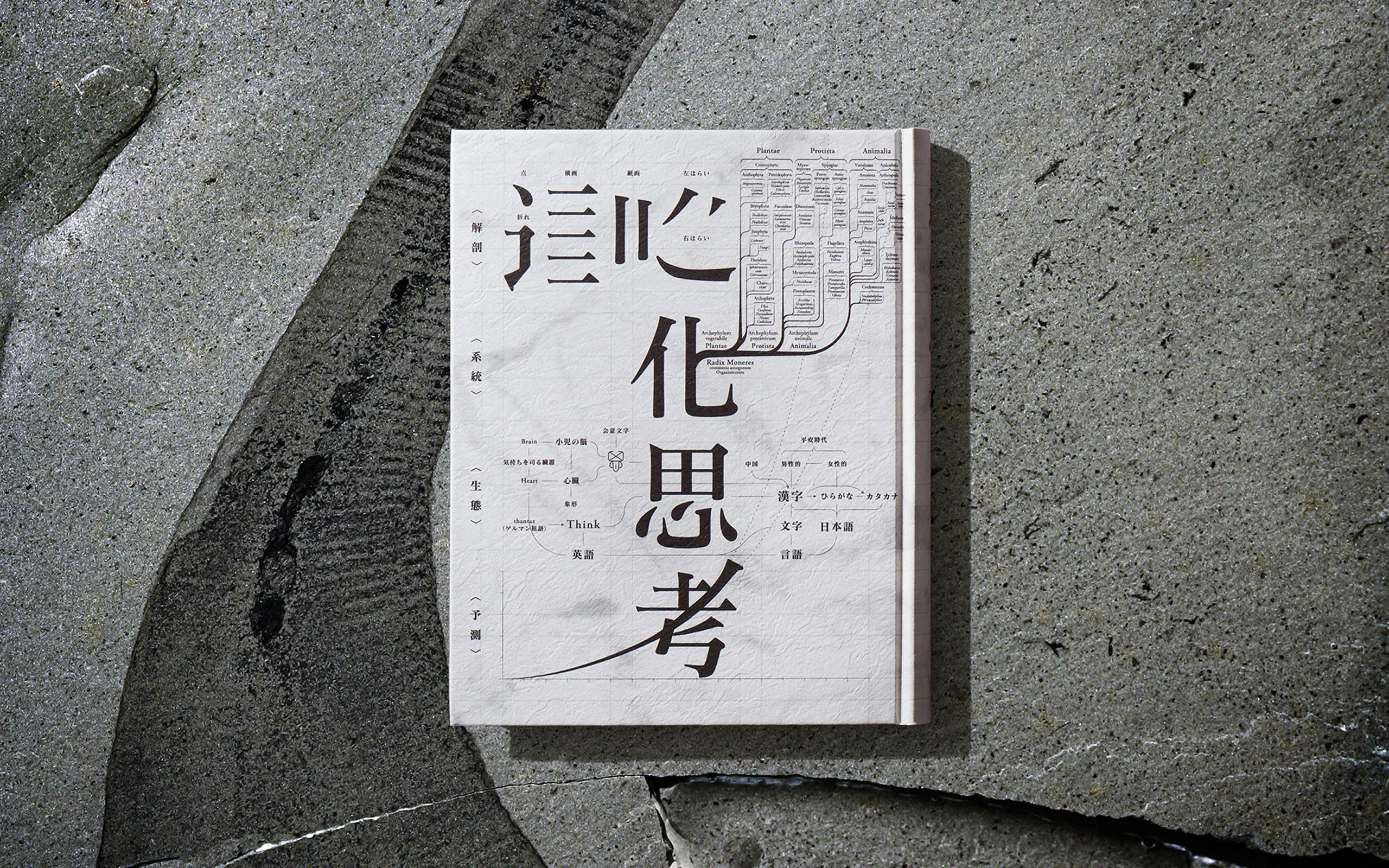
The book’s title logo shows the four kanji characters (進 化 思 考) in transition based on the Evolutional Creativity mutation patterns of Proliferate, Assimilate, Reverse, and Variate. When the paper cover is removed, the book cover shows the same four kanji characters as visual representations of the four ideas of spatial-temporal learning: Anatomy, Lineage, Ecosystem, and Prediction.
The printed logo might look black when looking straight from above, but it appears brown when looking from an angle. This effect was created through the Murata Kimpaku Company’s “coffee brown” hot stamping foil and is designed to look like faintly sparkling jewels embedded in the marble.
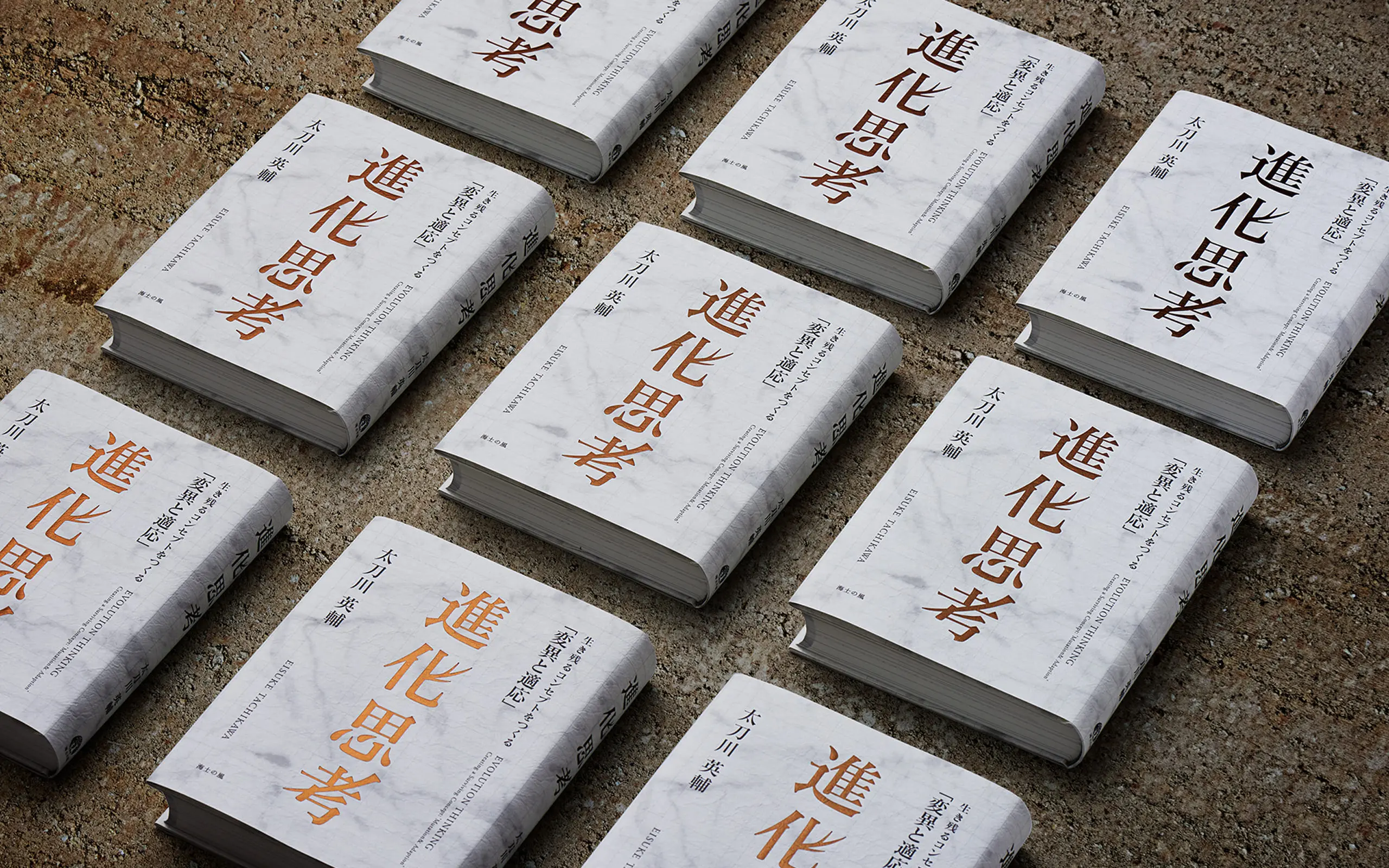
As Tachikawa is both the book designer and author, he could effectively design the typesetting of the main content by using wrap-around text to integrate the illustrations into the text. The book index also has a marble pattern to make it easier to find topics and reread the text.
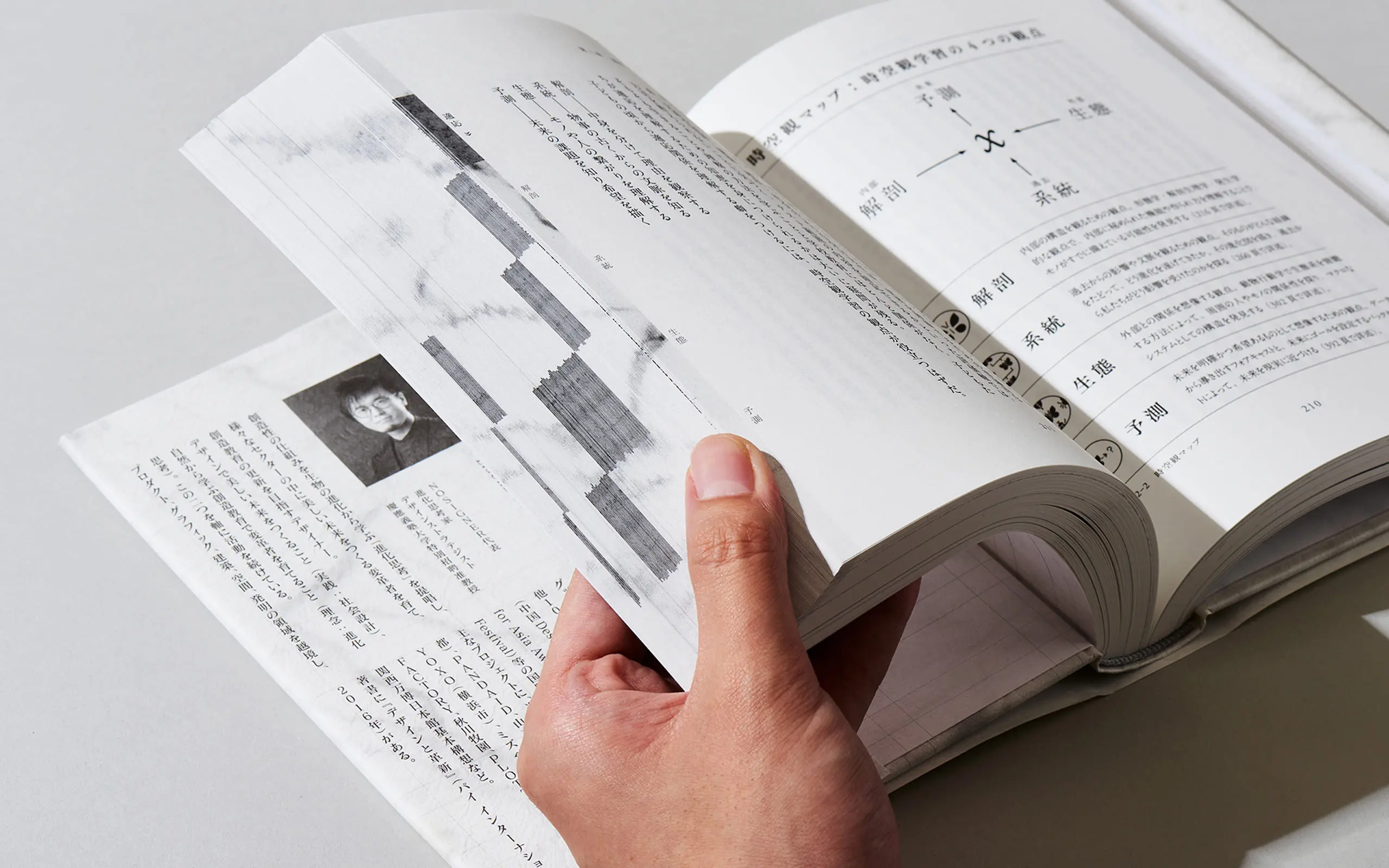
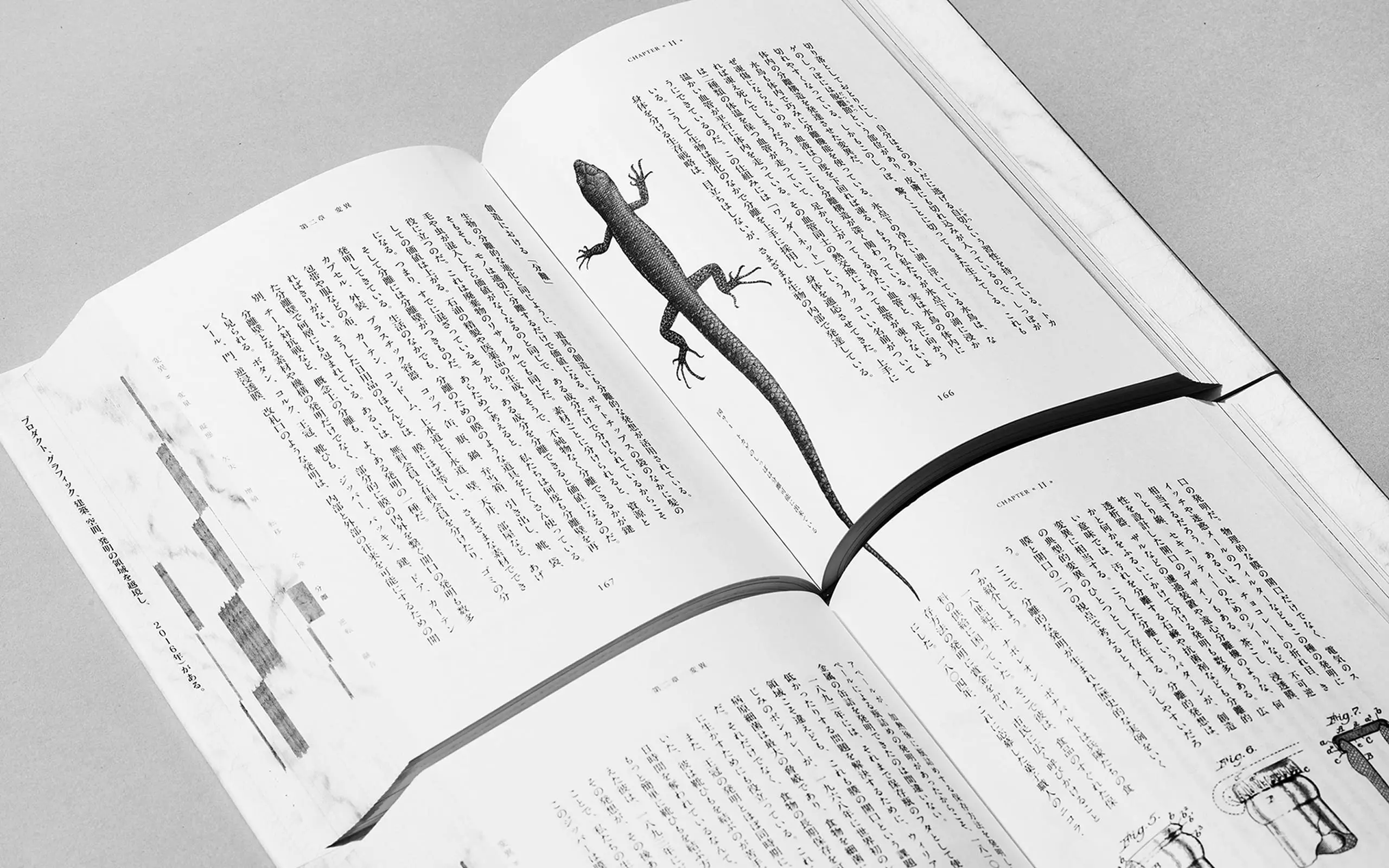
Leveraging the fact that the book originated from creativity workshops at companies and universities, it includes 50 workshops that encourage creative thinking. Rather than being just a textbook to be read, you can also try and put your creative ideas into practice. Despite the book’s length of over 500 pages, it is easy to read and easy to use. It can be used as a frequent reference or encyclopedia to look up “creativity” and “biological evolution” topics.
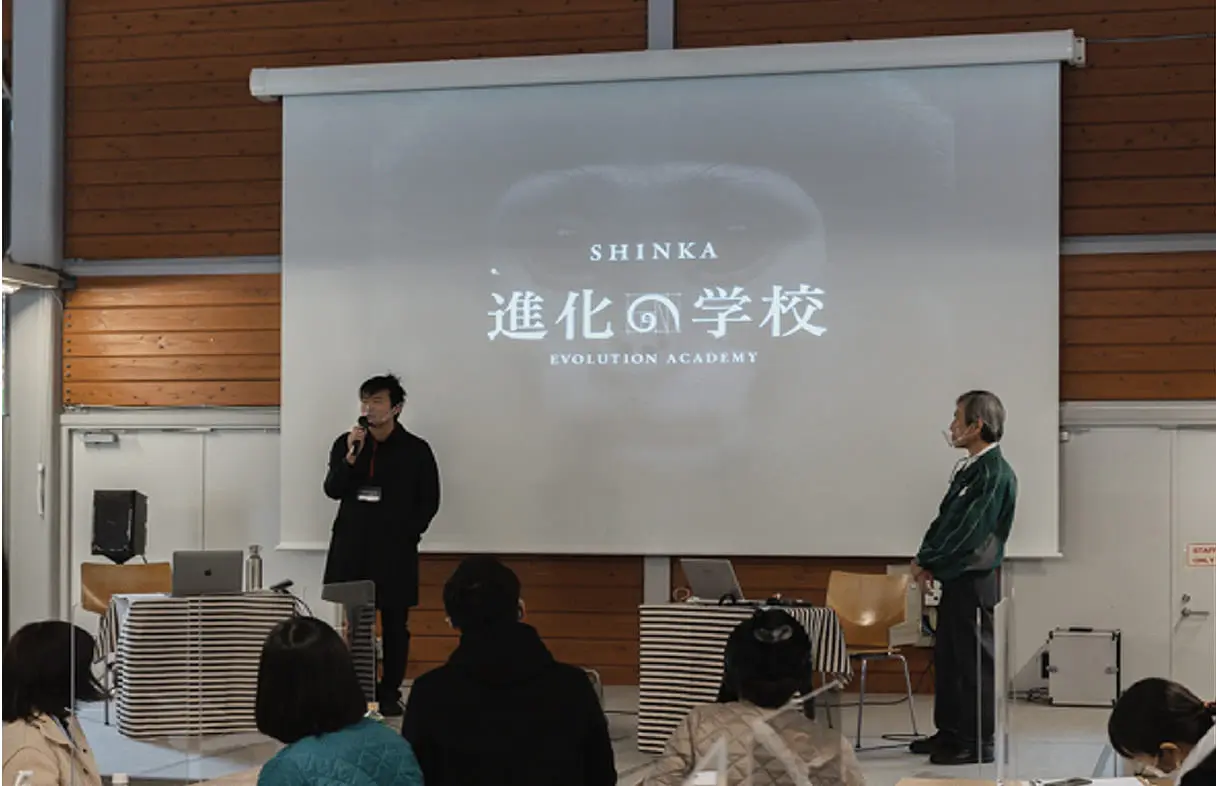
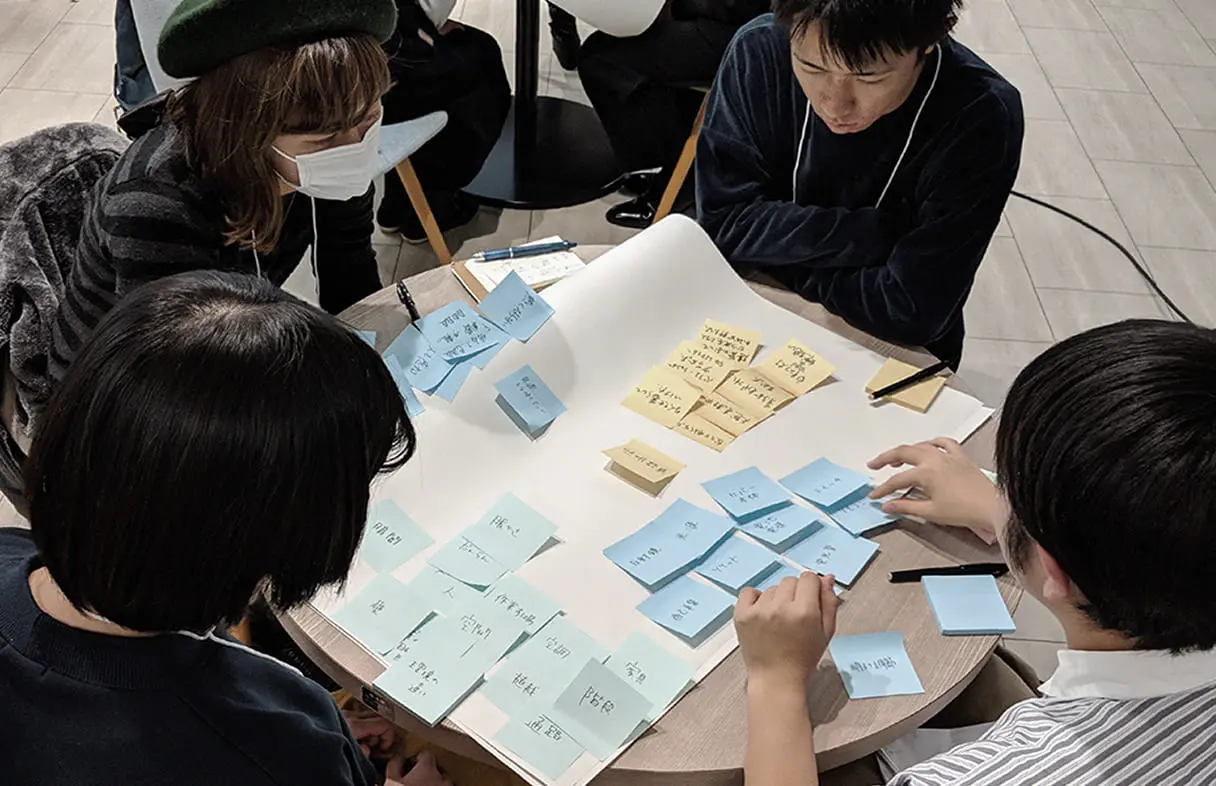
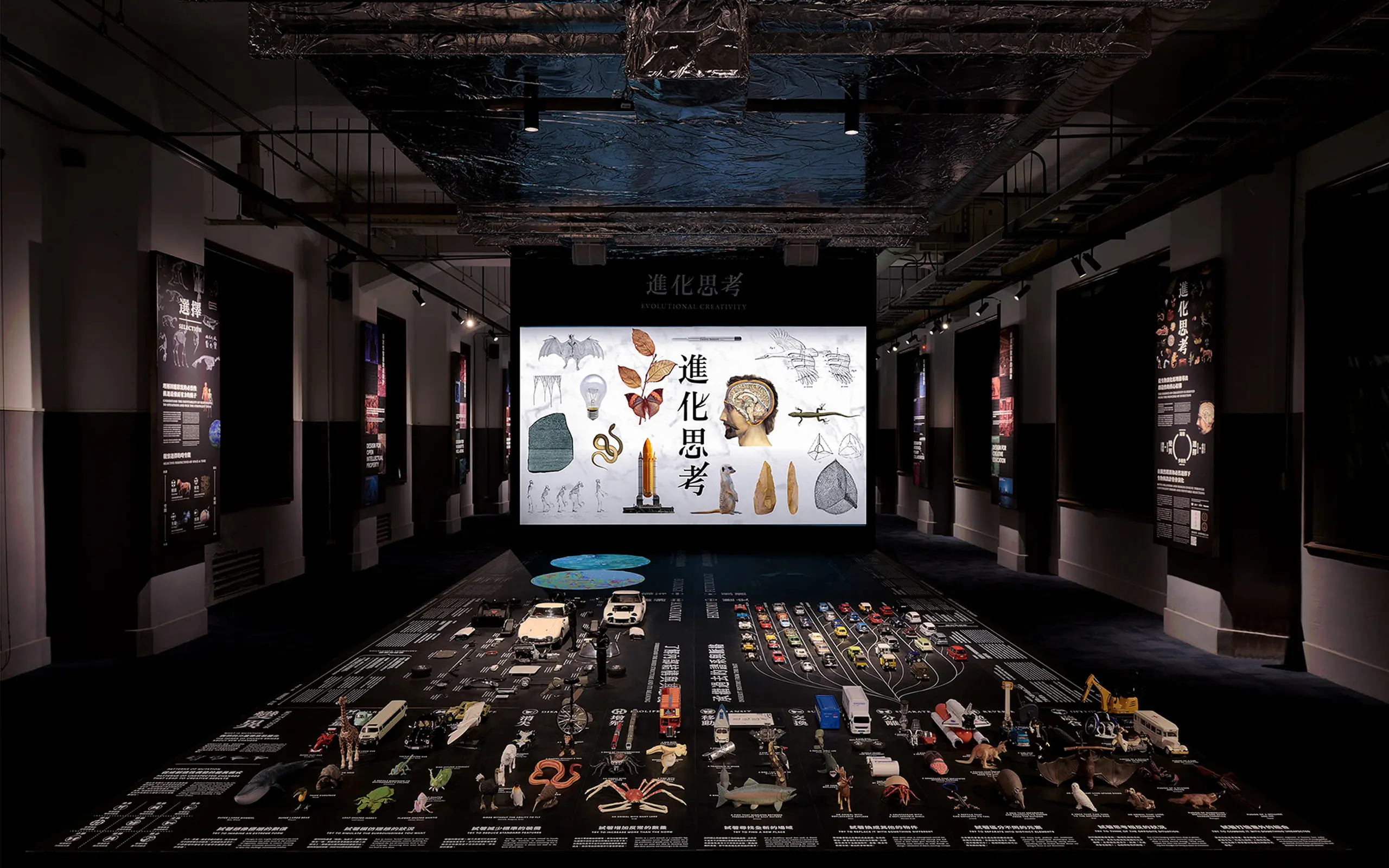
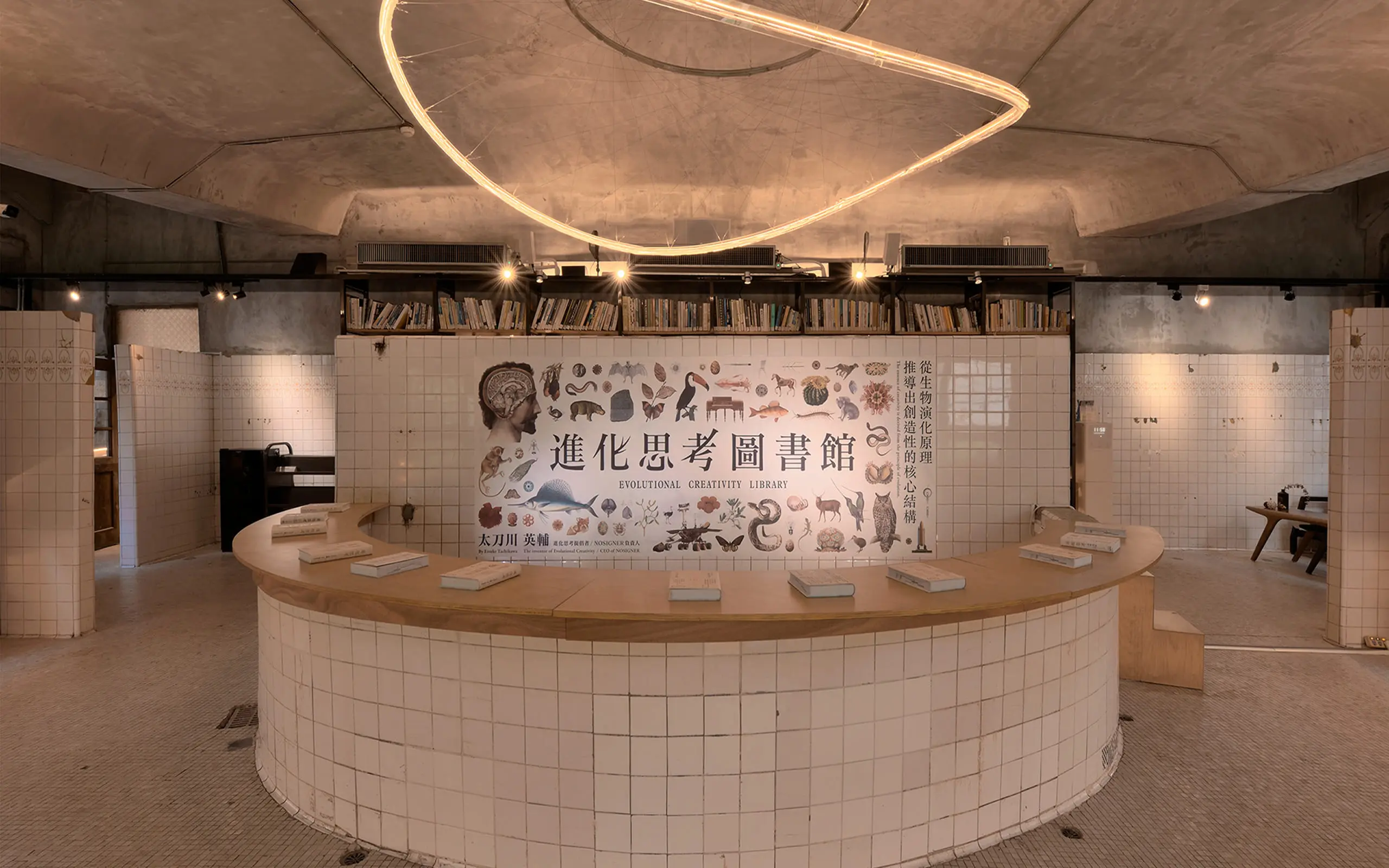
WILL
Updating creative teaching and overcoming an unsustainable world.
Evolutional Creativity has gained widespread acceptance and recognition as the world’s most powerful innovation method, having been adopted by major Japanese companies and educational institutions such as Panasonic, Fujitsu, Sumitomo House, and Keio University. The method has even been included as a question in the entrance examination for the national language at Doshisha University. As more and more individuals adopt this creative thinking and produce transformative projects for sustainability, the reach of Evolutional Creativity continues to expand. Even experts in Japan’s leading AI are incorporating the principles of Evolutional Creativity into their work, and workshops utilizing the method have been held at the country’s largest environmental exhibition of animals at the zoo. Evolutional Creativity is gradually making its way into a wide range of fields, and its impact will continue to grow.
Despite the early success and recognition of Evolutional Creativity, the implementation of truly creative education projects that draw inspiration from nature’s laws is still in its infancy.
As humanity continues to advance through technology, we are also facing the consequences of drastic changes to geology and climate, as well as the collapse of ecosystems. We have entered the “Anthropocene,” a geological era in which human activity has a profound effect on the earth. With our civilization having surpassed the “planetary boundary,” the point at which irreversible and sudden environmental change becomes a real possibility, time is of the essence. It is crucial that we implement innovative and effective educational methods such as Evolutional Creativity to ensure our survival and pave the way for a sustainable future.

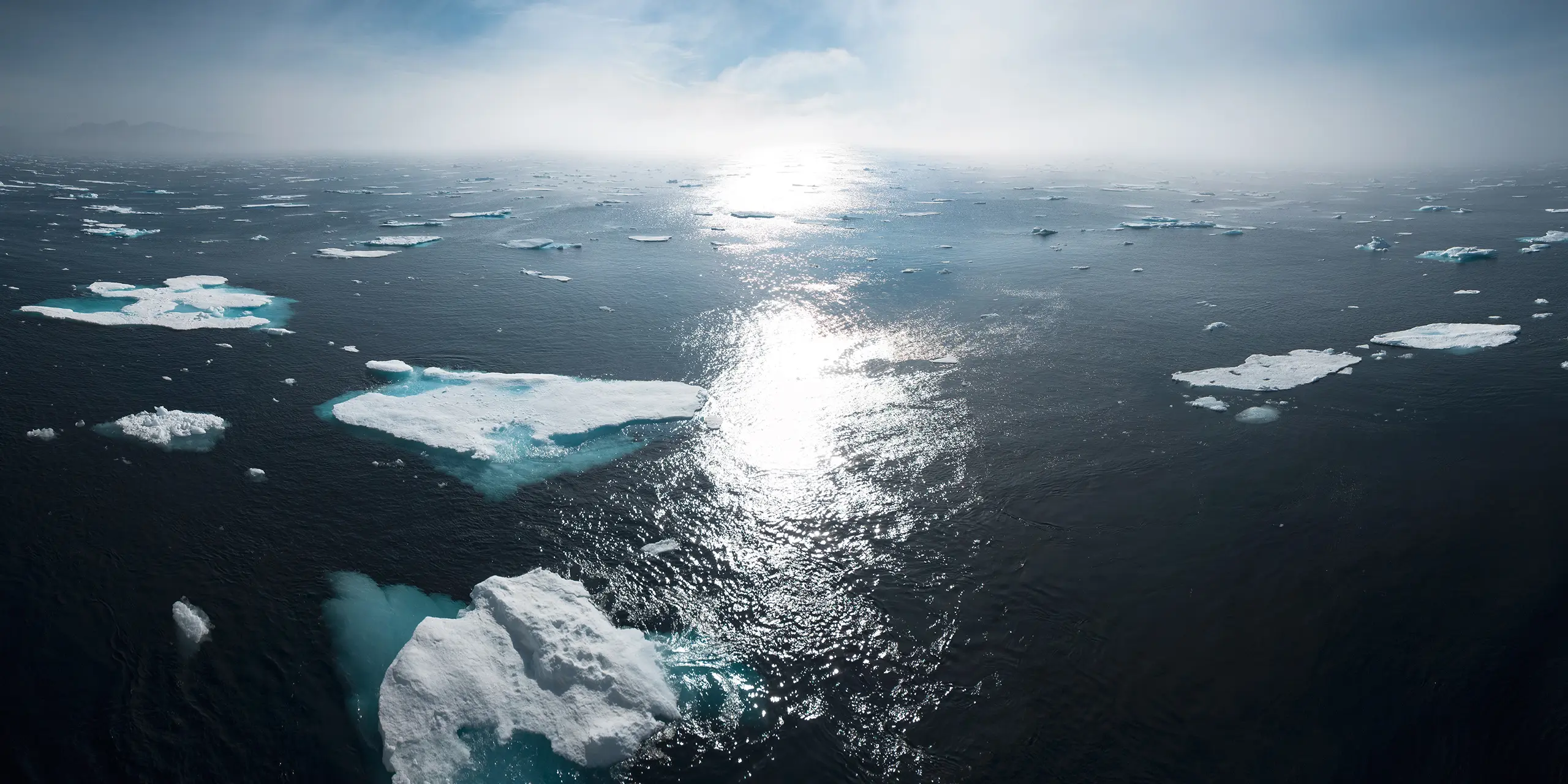
Humanity’s narrow expression of creativity has led to the crisis of civilization collapse, yet our creativity remains our only means of survival on earth. It is essential that we grasp the essence of creativity and use it to its fullest potential in addressing various issues and creating a sustainable society. Now is the time for us to delve deeper into the understanding of creativity and apply it to solutions that promote coexistence between human and the environment.
Friedrich Fröbel, a pioneer in early childhood education who flourished in the 19th century, laid the foundation for creativity education by drawing inspiration from natural science and has had a significant influence on later movements such as the Bauhaus. However, despite the groundbreaking work of Fröbel and the Bauhaus, creativity education has remained largely unchanged for the past century. Our goal is to evolve and revitalize this field of education, to keep pace with the ever-changing needs of society and the environment.
We believe that by updating creativity education through the lens of Evolutional Creativity, we can empower individuals to creatively tackle the pressing social issues of our time and maximize the creativity of each person in every community. By equipping individuals with the tools to think and act in new and innovative ways, we can work towards resolving the great challenges facing humanity and building a better future for all.
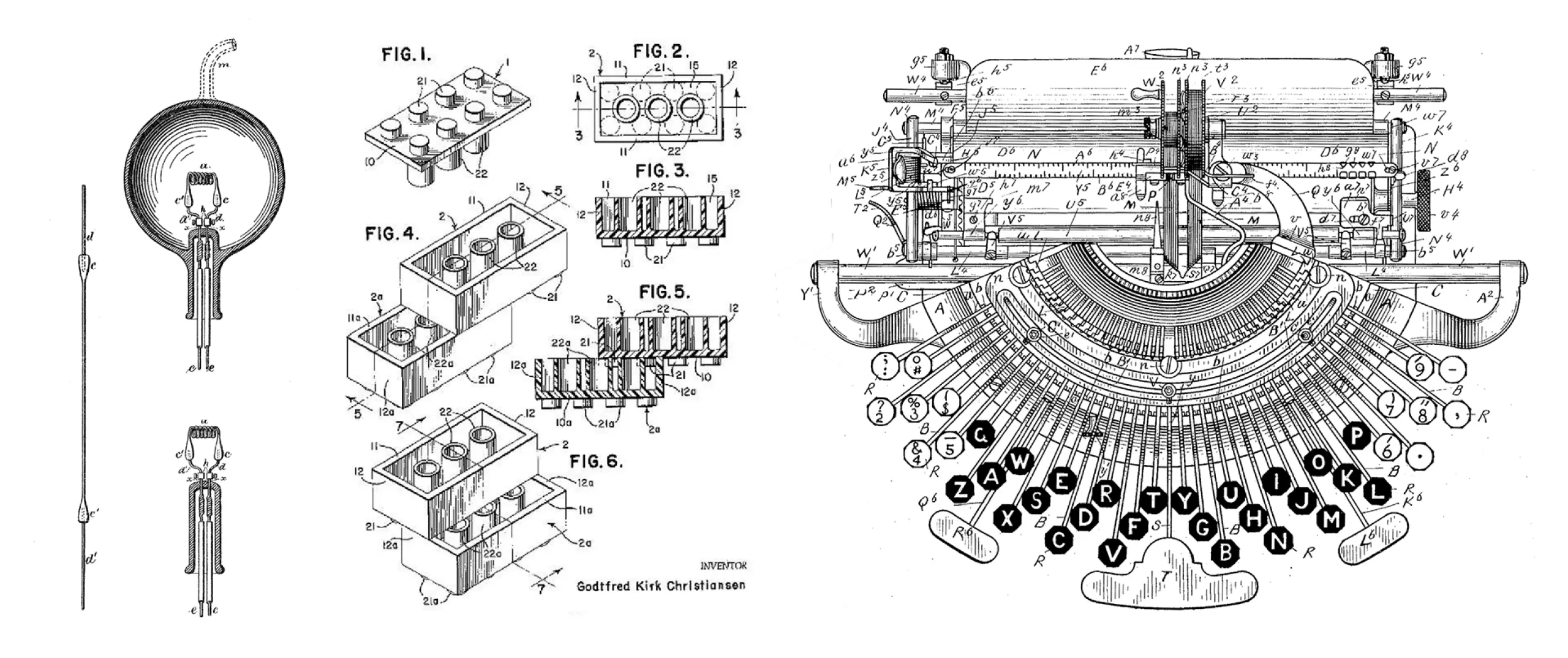
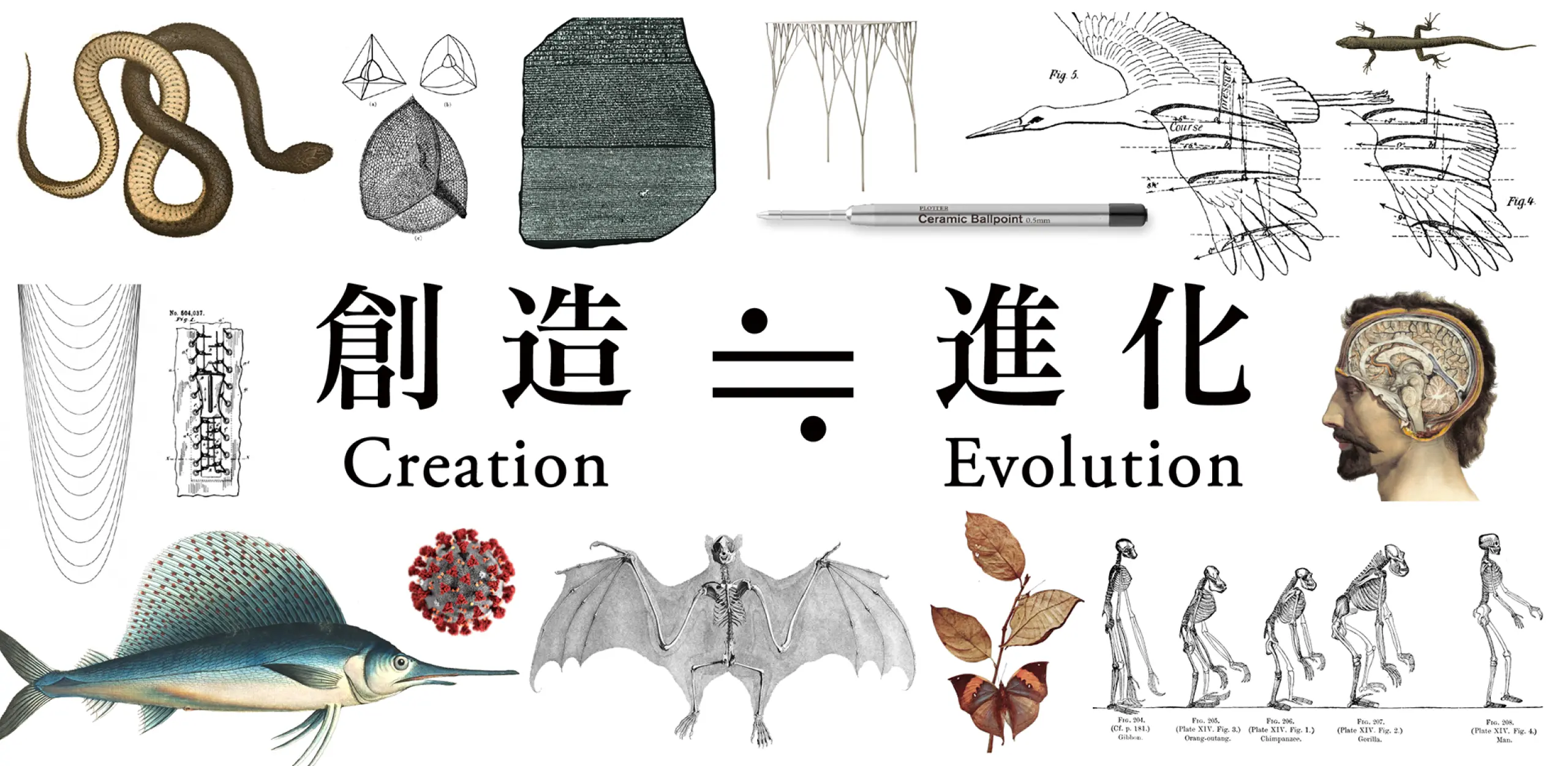

The book ” Evolutional Creativity ” was ranked No. 1 on Amazon’s business and economics book rankings soon after it went on sale for pre-order, and was quickly reprinted before its release. What is this new way of thinking that awakens the creativity that lies dormant within everyone?
Related Sites /

INFORMATION
- What
- Evolutional Creativity
- When
- 2016-
- Where
- Japan
- Scope
- Branding / Branding Strategy / Logo / Edition / Business card / Motion logo / Promotional items / Infographics / Photograph / Book cover and inner page design / Exhibition / Poster / Concept Development
- Award
- The 30th Shichihei Yamamoto Prize
- SDGs
CREDIT
- Inventor
- Eisuke Tachikawa
- Thanks
Amanokaze (kazetotuchito Inc. ),Eiji Press Inc. , NOSIGNER staffs,Ginza Graphic Gallery , Yuichi Hisatsugu, Kunihiko Sato
